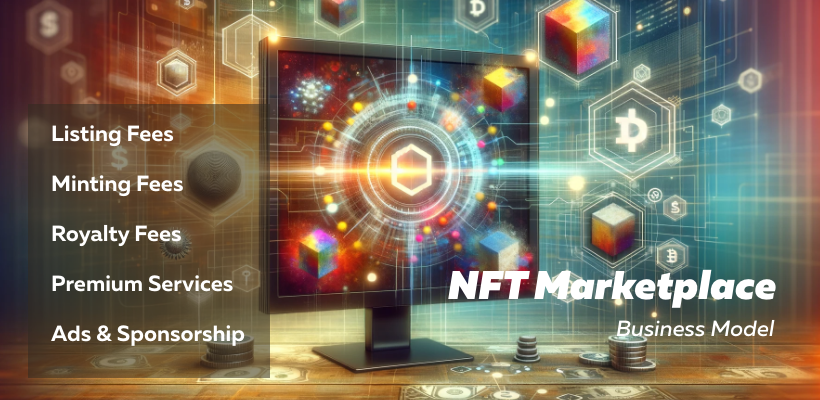The NFT (Non-Fungible Token) marketplace business model revolves around the buying, selling, and trading of digital assets that are unique and cannot be interchanged directly with one another. These digital assets can be anything from digital art and collectibles to virtual real estate and more. Here’s how the business model typically works and how marketplace owners earn money:
- Listing Fees: Some NFT marketplaces charge creators a fee to list their NFTs for sale. This fee can be a flat rate or a percentage of the NFT’s sale price.
- Transaction Fees: Marketplaces often take a cut from each transaction that occurs on the platform. This is usually a percentage of the sale price of the NFT. The percentage varies from one marketplace to another but is typically around 2.5% to 5%.
- Minting Fees: When creators create (or “mint”) an NFT, they might need to pay a fee. This fee goes to the marketplace or, in some cases, is a network fee paid to the underlying blockchain infrastructure.
- Royalty Fees: Some marketplaces enable creators to earn royalties from future resales of their NFTs. While this is primarily a benefit for creators, marketplaces may take a small percentage of these royalties as well.
- Premium Services: Marketplaces may offer additional services for a fee. These can include features like enhanced visibility for listings, marketing services, or advanced analytics.
- Partnerships and Collaborations: NFT marketplaces might collaborate with artists, brands, or other companies for exclusive launches or collections. These partnerships can provide an additional revenue stream through shared profits or fees.
- Staking and Yield Farming: Some NFT platforms incorporate elements of decentralized finance (DeFi), allowing users to stake their NFTs or associated cryptocurrencies to earn rewards. The platform may benefit from these DeFi interactions through transaction fees or by taking a percentage of the rewards.
- Secondary Market Activities: Beyond the primary sale of NFTs, marketplaces can earn from secondary market transactions, where they continue to earn a percentage from each sale or resale of an NFT.
- Community and Governance Tokens: Some marketplaces issue their own tokens, which can be used for governance (voting on platform decisions) or as a currency within the marketplace. The value of these tokens can be another source of revenue for the marketplace.
- Advertising and Sponsorships: Marketplaces may also generate revenue through on-site advertising and sponsorships, especially if they have high user traffic.
- Membership or Subscription Fees: Some marketplaces may offer membership or subscription models, where users pay for exclusive access to certain features, early access to collections, or lower transaction fees.
- Educational Content and Services: Providing educational resources, workshops, or consultancy services about NFTs and blockchain can be another revenue stream, especially for platforms focusing on new entrants in the NFT space.
In essence, the NFT marketplace business model is multifaceted, leveraging various streams of revenue to capitalize on the unique nature and growing interest in non-fungible tokens.

